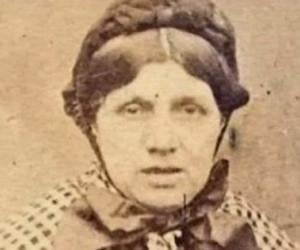Major Crimes
Jack the Ripper is believed to have murdered at least five women, who were working as prostitutes, in an impoverished region in London. In the early morning of 31 August 1888, the body of a middle-aged prostitute named Mary Ann Nichols was found lying on the ground by a cart driver in the Whitechapel area of London.
Mary Ann’s throat had been slit and her abdomen ripped open by a deep, jagged wound. There were also other injury marks on her body, all caused by a sharp knife. The discovery of this body shocked the residents of Whitechapel even though violent crimes were not a rarity in the area.
Another shock awaited the citizens of London on the morning of 8 September 1888. Annie Chapman, a 47-year-old prostitute, was found dead near a doorway in the Whitechapel area. Her body too bore similar injuries as in the case of Mary Ann. Chapman’s throat had been slit, her abdomen slashed open, and her uterus removed.
On 30 September 1888, the body of Elizabeth ‘Long Liz’ Stride was found by a cart driver at around 1 a.m. Blood was still flowing from a cut in her neck, suggesting that she had been killed not long ago. The same day, a body of another woman named Catherine ‘Kate’ Eddowes was also found. Her throat had been slashed and her body mutilated.
The discovery of two bodies on the same day set off a panic wave in Whitechapel as the residents realized that the killer was on a rampage. Because of the similarities of the injury marks left on the bodies, the murders of Stride and Eddowes were attributed to the same killer who had murdered Nichols and Chapman.
On 1 October 1888, the ‘Central News Agency’ received a postcard signed ‘Jack the Ripper.’ The writer claimed responsibility for Stride's and Eddowes's murders. A few days later, on 16 October, the chairman of the ‘Whitechapel Vigilance Committee’ received a parcel containing half a human kidney along with a note that claimed the writer had eaten the missing half. These letters, along with hundreds of other letters, received by the police and the newspapers created considerable sensation.
The body of another woman named Mary Jane Kelly was discovered in her room on 9 November 1888. Mary Jane Kelly’s body, which was severely mutilated, was found in a state of undress. Her throat had been slit and her abdomen ripped open. Several of her internal organs had been taken out, and her heart was missing. This murder too was believed to have been committed by the serial killer who was now dubbed ‘Jack the Ripper.’
Several weeks went by and no other gruesome murder of the same kind was reported. Kelly is widely believed to be the final victim of Jack the Ripper.
Along with the murder of these five women, six other murders, those of Emma Elizabeth Smith, Martha Tabram, Rose Mylett, Alice McKenzie, Frances Coles, and an unidentified woman, were also linked to Jack the Ripper.
The police interviewed more than 2000 people and several suspects were named. Since the killer seemed to have a certain degree of anatomical knowledge, several butchers, slaughterers, and physicians fell under the purview of suspicion. The fact that none of the women were sexually assaulted gave rise to the speculation that the killer might have been a woman.
Over the years, more than 100 people have been suspected for the crimes committed by Jack the Ripper. Some of the strong suspects were Montague John Druitt, Seweryn Antonowicz Kłosowski, Aaron Kosminski, Michael Ostrog, and Francis Tumblety.
Legacy
The fact that the identity of Jack the Ripper was never discovered made his case one of the most enduring murder mysteries in the history of crime. The killer has been featured in hundreds of works of fiction, including novels, stories, video games, plays, operas, television programs, and films. The case has also inspired several works of non-fiction, making it one of the most written-about true-crime subjects.
In 2006, ‘BBC History’ magazine and its readers voted Jack the Ripper as the worst Briton in history.
Facts About Jack the Ripper
Despite his notorious crimes, Jack the Ripper's true identity remains a mystery, sparking endless speculation and theories over the years.
Jack the Ripper's choice of victims, all impoverished women, shed light on the social inequalities and hardships faced by many in Victorian London.
The letters purportedly written by Jack the Ripper to the police and media added an eerie and mysterious element to the case, contributing to the legend surrounding the killer.
The investigation into the Jack the Ripper murders marked a turning point in forensic techniques and criminal investigations, pioneering new methods that are still used today.
Jack the Ripper's legacy has inspired countless books, movies, and TV shows, cementing his place in popular culture as one of history's most infamous and enigmatic figures.









